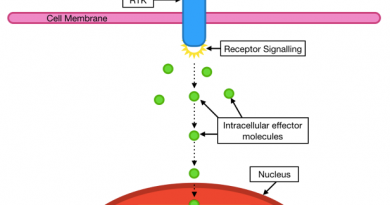Angels, Demons and The Cure For Cancer
In Dan Brown’s bestselling book Angels & Demons, a canister of anti-matter is stolen from a European Institute for Nuclear Research (CERN) laboratory in Switzerland and planted at the heart of the Vatican City. The canister uses electromagnets to keep the sample of antimatter in suspension, but is rapidly running out of battery, and as a CERN scientist in the book explains the resulting contact of the anti-matter and the matter in the walls of the canister will trigger a process called ‘annihilation’ – creating an explosion which threatens to destroy the ancient home of the Catholic Church. Exciting stuff indeed.
However, while perhaps a little over dramatic, like all good stories the plot-line of Angles and Demons is based largely in truth. CERN really does use the Large Hadron Collider in Switzerland to produce anti-matter for use in experiments – and while blowing up the Vatican City isn’t quite on the agenda just yet (all the anti-matter produced in the world only contains enough energy to power a 60 W light bulb for 4 hours), CERN is attempting to put the technology to use in much more practical ways, such as searching for alternative cancer treatments.
One of the go-to treatments for cancer right now is Radiotherapy, which consists of bombarding cancerous tumours with radiation in the form of protons in an attempt to destroy the recklessly dividing cells, but in order to reach said tumour the radiation must first pass through the healthy cells in front of it, which sustain plenty of damage as it does so. Thus Radiotherapy is little better than the biological equivalent of blanket bombing – effective, but with a heavy cost in collateral damage. Although the technique has improved steadily over the years, this base problem still remains, and a small CERN research team of medics and physicists called ACE represent the latest attempt to solve it – this time using antimatter technology.
You see, the majority of the antimatter produced by the Large Hadron Collider comes in the form of ‘anti-protons’, small sub-atomic particles which (as the name suggests) are the perfect opposite to protons: the same tiny size, but negatively charged. Theoretically, if anti-protons were used in place of regular protons in radiotherapy, then although the healthy cells in front of the tumour would still receive the same damage (as protons and anti-protons are the same size), anti-protons would deliver more destructive energy to the tumour cells per particle fired, as when they make contact with the tumorous nuclei they perform the annihilation reaction mentioned earlier, which not only releases enough energy to destroy a cancerous cell but also blows cell fragments into surrounding cancer cells, killing them too. This means that in using anti-protons, less particles need be fired through the healthy cells in order to achieve the same destructive effect on the tumour, which means less collateral damage.
So far, early experiments at CERN testing this hypothesis have proved encouraging. When fired at samples of hamster cells, it seems that anti-protons passing through cause just a quarter of the damage compared to regular protons, a fact which may lay the foundation for a new treatment of patients with repeating cancers – a method of giving them up to four times more radiotherapy-style treatment with no extra ill effects, which in turn could improve survivability rates. However, the technology is still in its natal stages, with CERN saying medical trials could still be decades away, and even then, producing anti-matter is difficult and expensive, and it may simply not be abundant enough to make for a practical cancer treatment.




